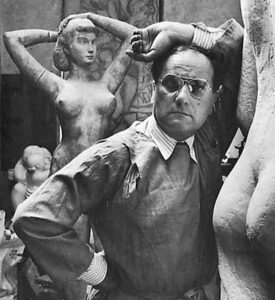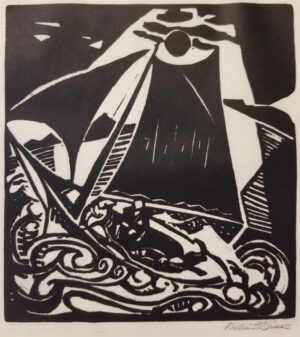ZORACH, William
 Drawing heavily from Cubism and Fauvism, William Zorach turned to the natural world for inspiration for his artwork. He was intensely moved by Ralph Waldo Emerson’s essays about nature, relating Emerson’s desire to shed traditional modes of thought with the innovation that early American modernists were promoting.
Drawing heavily from Cubism and Fauvism, William Zorach turned to the natural world for inspiration for his artwork. He was intensely moved by Ralph Waldo Emerson’s essays about nature, relating Emerson’s desire to shed traditional modes of thought with the innovation that early American modernists were promoting.
Zorach took art classes at the Educational Alliance as a child and quit school at the end of the seventh grade to become an apprentice at a lithography firm. From 1905 to 1908 he studied drawing and painting at the Cleveland School of Art, then spent two years at the National Academy of Design in New York. In December 1910 he went to France intending to pursue a career as an academic painter, but Marguerite Thompson, his future wife, introduced him to avant-garde painting in the salons of Paris.
Zorach’s stone and wood carvings and his work in plaster and terra cotta are stylistically rooted in Egyptian, Greek, and, to some degree, primitive art. His family members were frequent subjects, as were the family pets, and much of Zorach’s art explores nuances of human emotion. Highly successful throughout much of his life, Zorach received many commissions, including Spirit of Dance for Radio City Music Hall.


